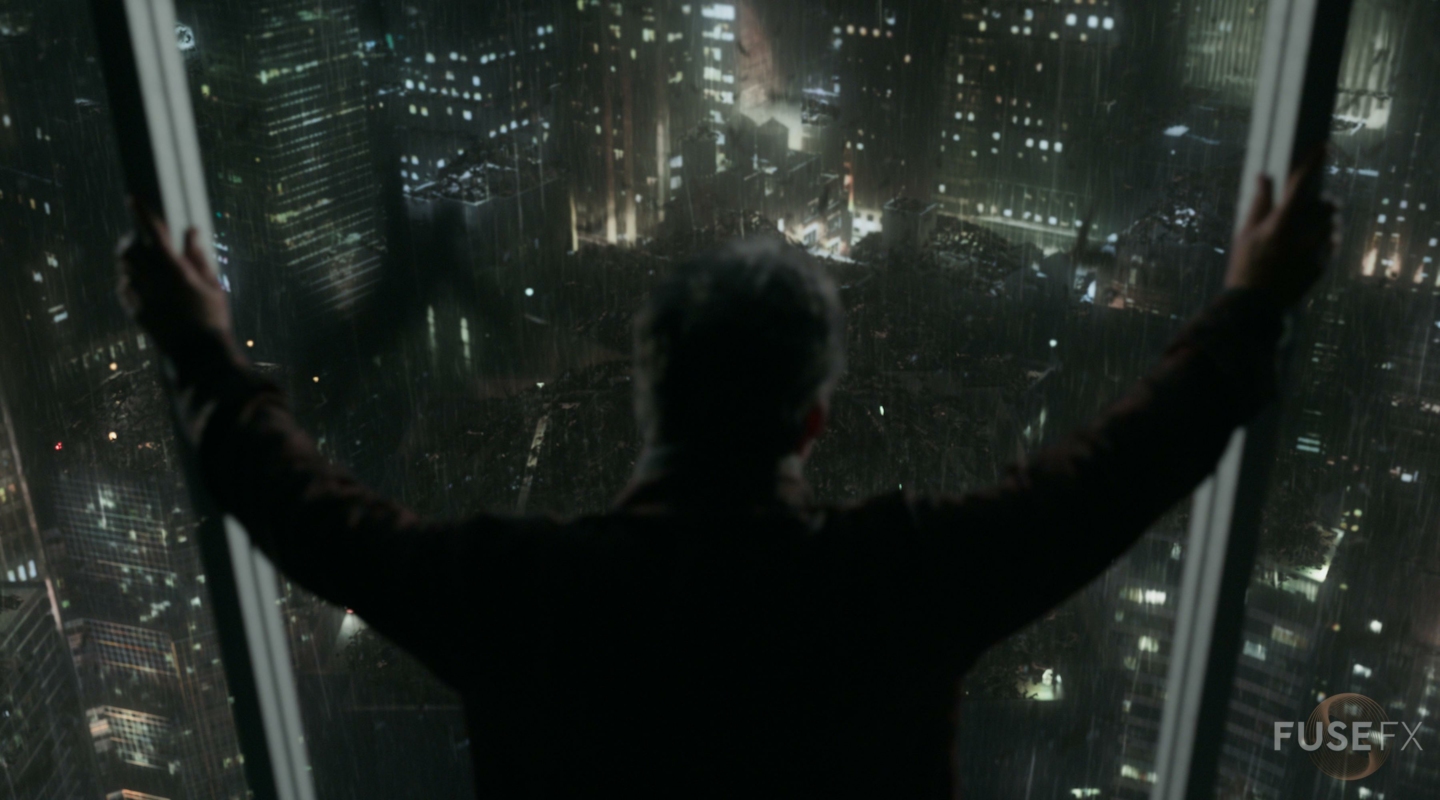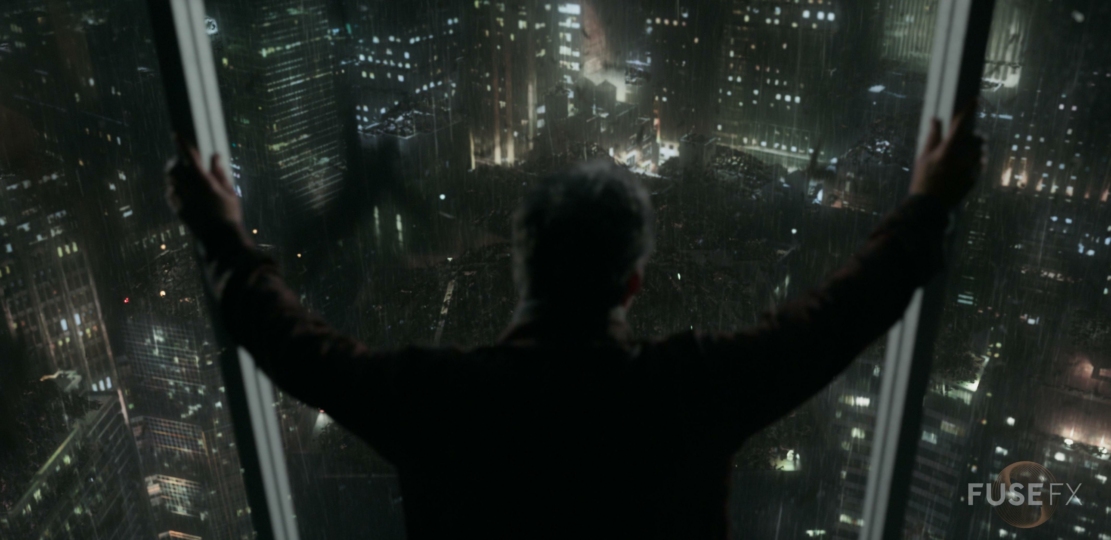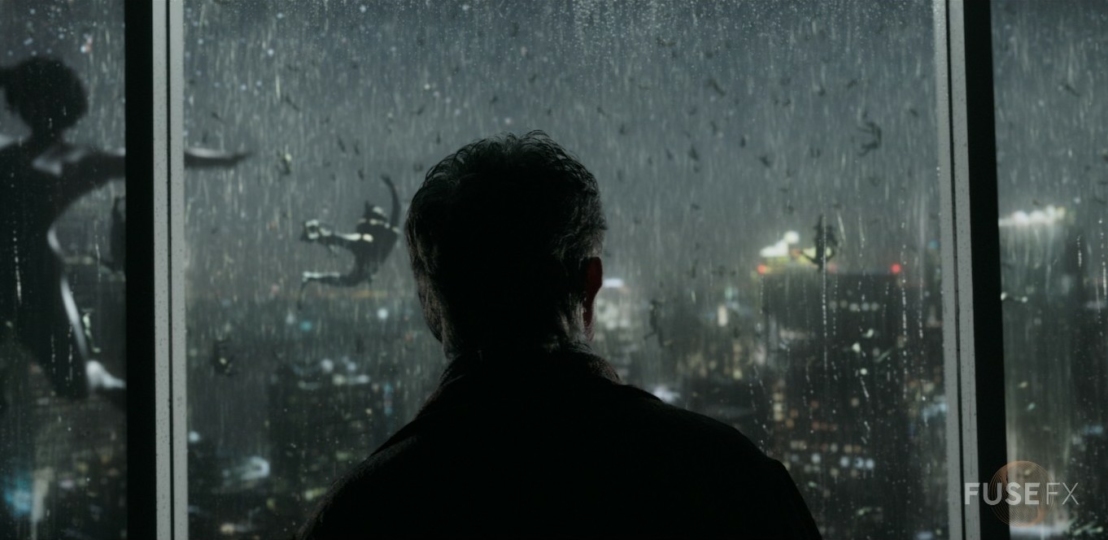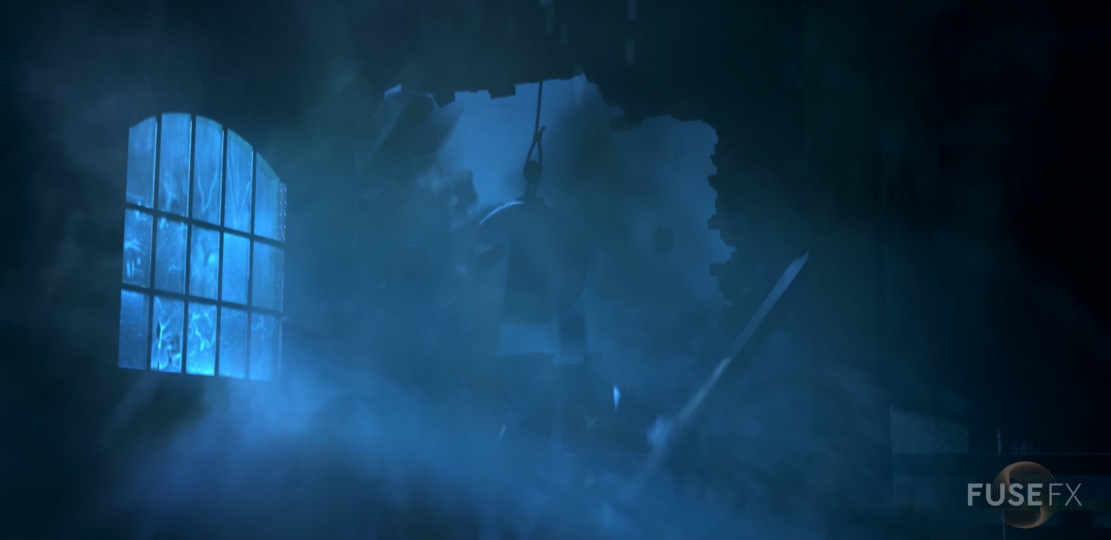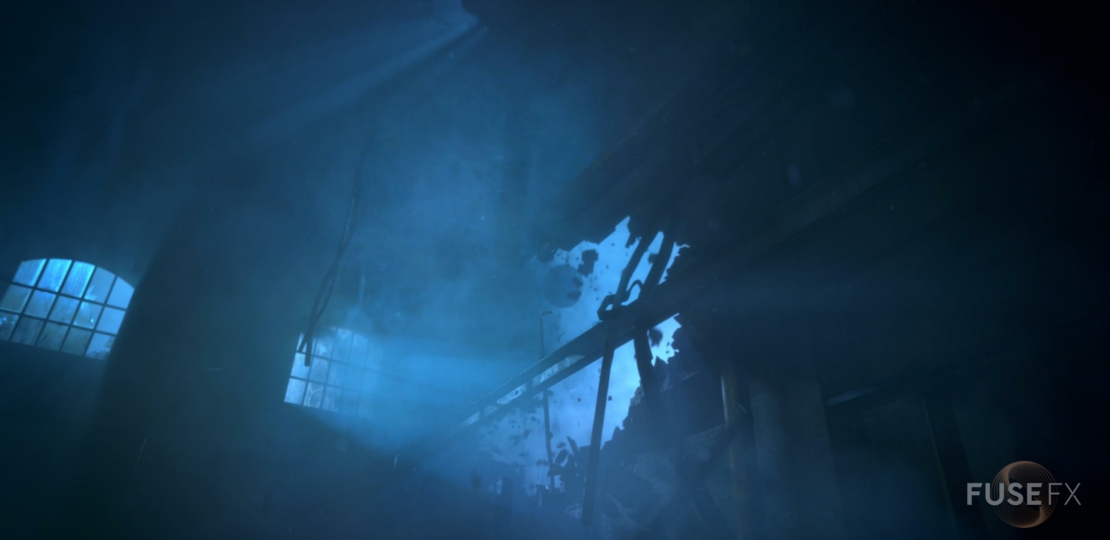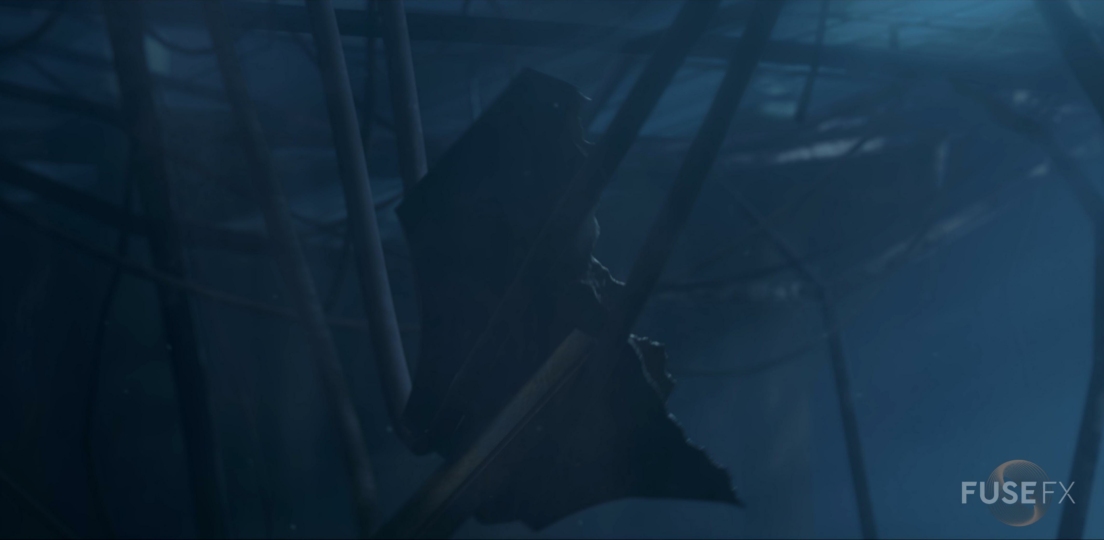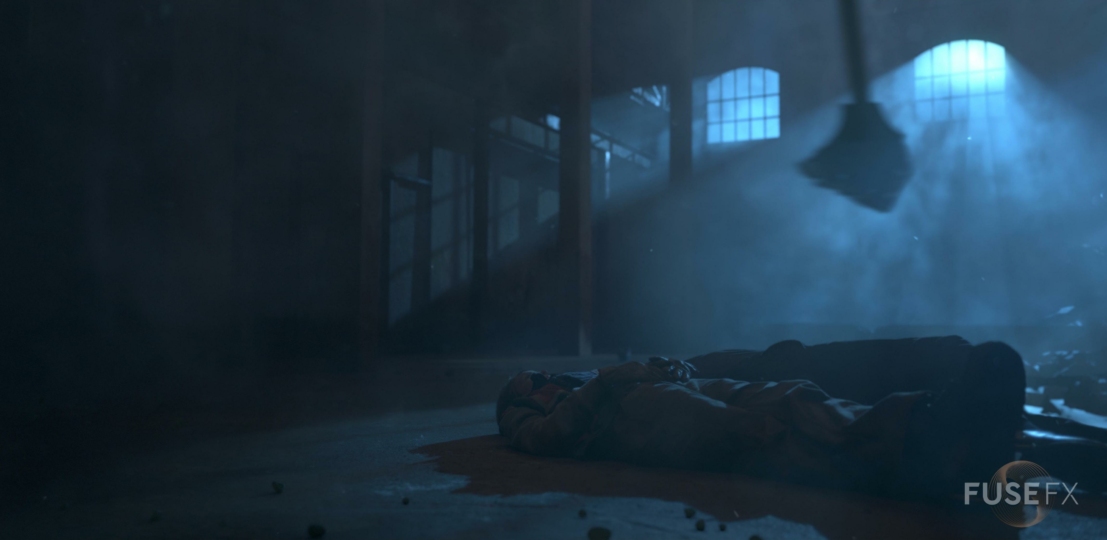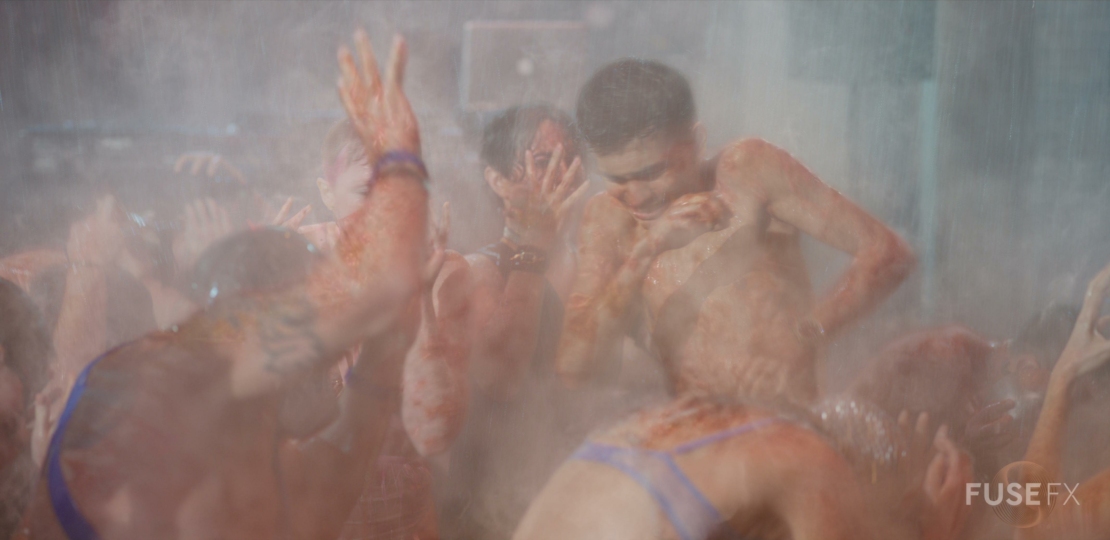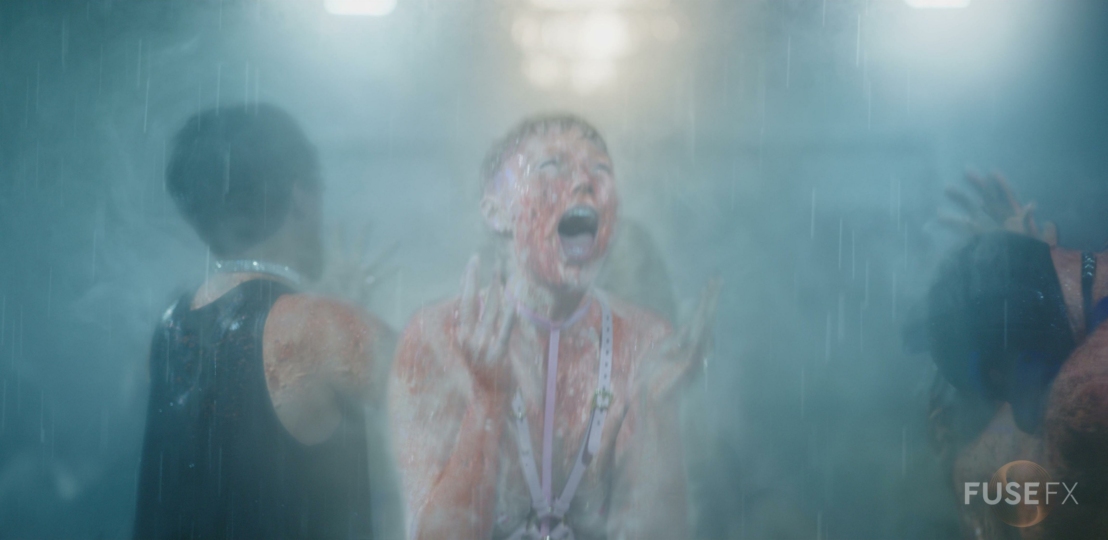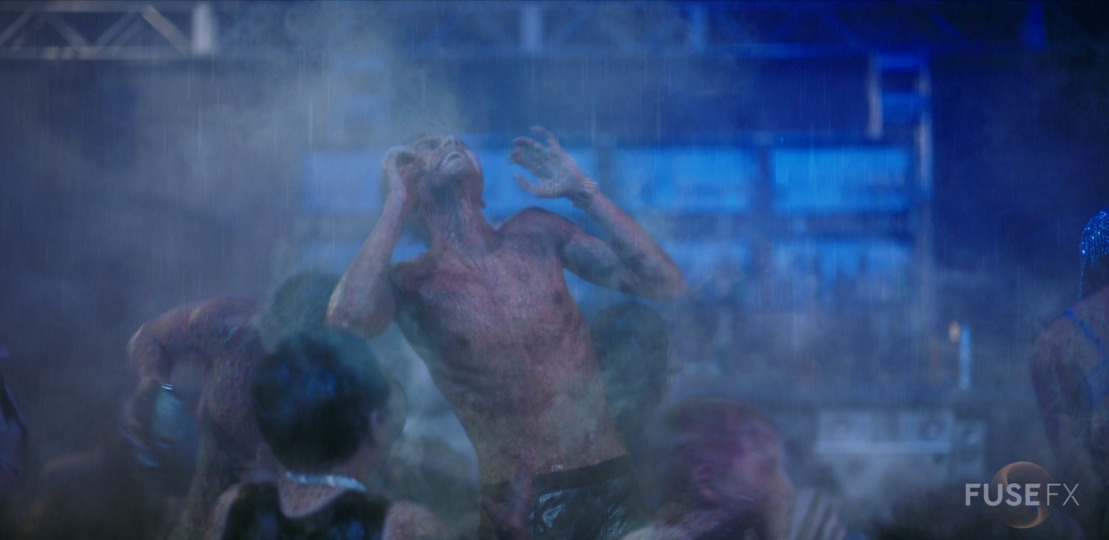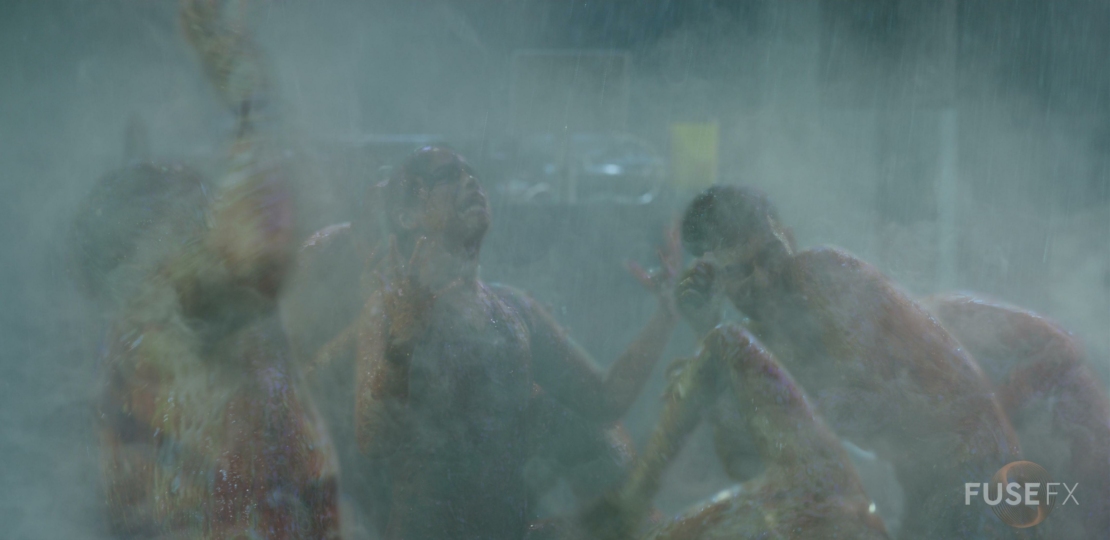The Fall of the House of Usher
The Fall of the House of Usher
Our VFX Supervisor Marshall Krasser discuss our team's work on The Fall of the House of Usher and creating some of the show's most memorable set pieces.
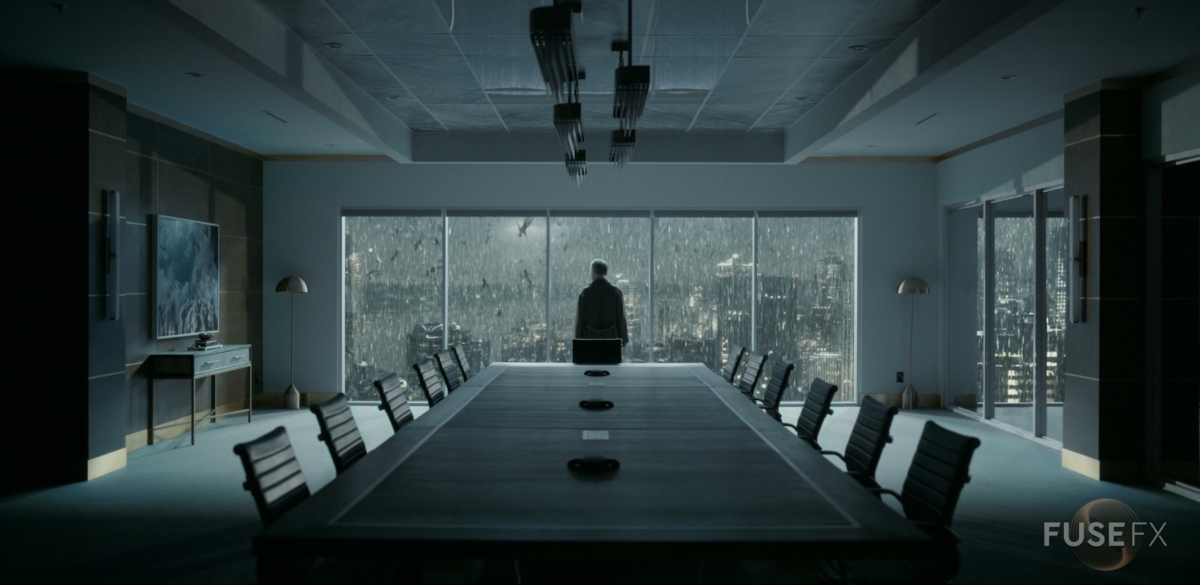
Falling Bodies
"That was another tricky one — it was a pretty massive simulation that you had to deal with. So, we had to build the preliminary testing, we built a part of the city, and so we had the bodies falling and hitting and bouncing and dropping and piling up and accumulating."
"It's a progression that had to happen throughout the course of the sequence, so a lot of stuff went into that to kind of get all of the bases covered. That type of stuff, Michael Capton was in our LA offices and was working with the team down there trying to get everything worked out in the pipeline setup for that. As the preliminary testing went through, we were able to get what he wanted. But then the trick is let's get it into the shots, and there again, on a lot of the shots, it's a digital environment out there. So, the far background is usually a DMP painting with 3D buildings, so it's a combination of a two-and-a-half and 3D building that we could start dropping things through.
As far as the overall look of that, a lot of the feeling of wetness and everything kind of fell to Derek Bird, our overall compositing supervisor for the show. Derek worked with the team in trying to get that sense of rain, because they want it to be like a rainstorm, but you still had to read that they were bodies, and they needed to fall at a realistic speed. When we first did the terminal velocity, they just ended up being blurs, so that was not working quite right. Then, we played into adjusting the speed of the fall, adjusting the motion blur, we did two different versions, one with reduced motion blur that we would mix in back with the normal motion blur to give a little bit more depth in there. Then what we ultimately came down with was we were still having difficulties kind of reading it overall.
Mike and his team were talking through it, and it was kind of determined during the lightning flashes, it kind of acts like a strobe, which you kind of saw happening in the Perry shower sequence, you have a strobe effect, where they would become sharp, you would actually see them without motion blur. You can't really probably viewing it and step through it frame-by-frame, but on the lightning frames, we reduced or almost eliminated all of the motion blur on the falling bodies, so that allows you to pop and read them. Otherwise, they just would have been blurred, so that was a very unique approach that Mike was on board with, and it made things feel realistic and yet creepy, too, something a little beyond the ordinary."
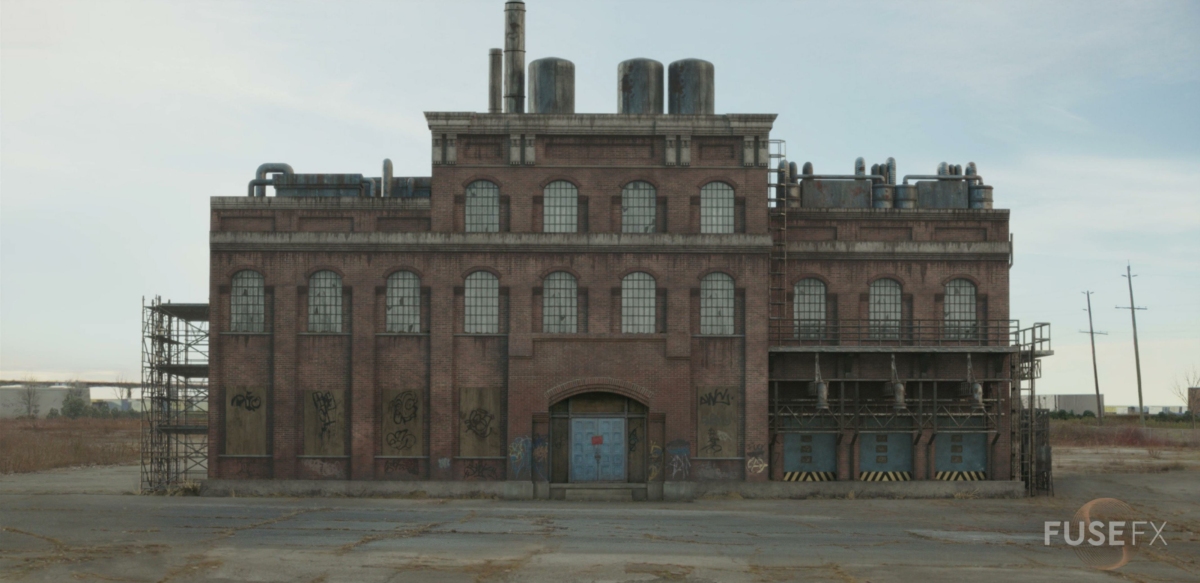
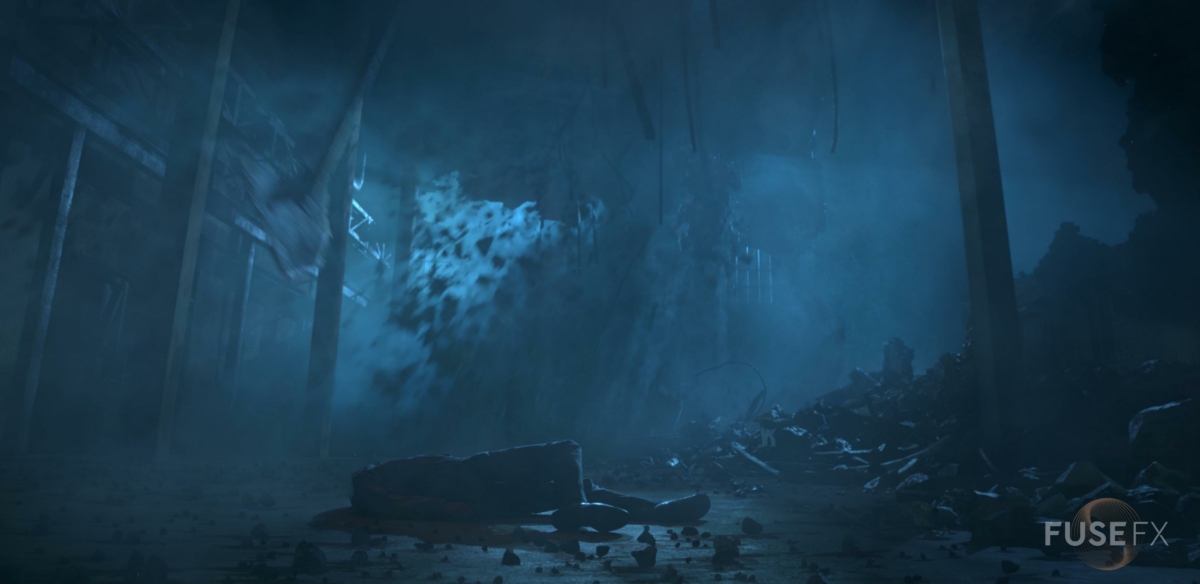
The Pendulum
"The pendulum had been designed, they had a partial pendulum swinging on set that was done that was mechanical, the one thing that we had to figure out was how it was actually going to break loose, and fall, and get caught and start swinging."
"we had to do a post-vis of mocking it up roughly, impact here, impact here and impact here. It all had to work together, so that's where things got very complicated in that sequence. Because as the wrecking ball hits, boom, you see it hit in the very next shot as a CG shot. You need to see the continuation of that debris falling, so it was like one of those things, if you change something upstream, it rippled down to other shots, in order to keep the continuity going through. Because if you're able to film that for real, heaven forbid, they would have had cameras set up, so their reaction would have been caught, and they would have had a continuity that would kind of move through the whole thing.
That, to me, was one of the more challenging things that I've actually had to deal with in my career. Trying to keep that continuity of debris and dust and falling, elements like, "That rock is here when you cut away, and then that rock is there continuing to fall as you get in to the next shot." So, again, that's where things get really complicated. It requires a lot of feedback, because there is a story that the pendulum is telling, and there's a story that the building is telling, and there's a story that has to be told, and just to get all of those things pulled in together, yet stay true to the set and the look, it was a challenge, but it was a fun challenge."
Perry's Party
"It's meant to make people feel a little uncomfortable. I think, whether that's exactly what he was going for, we had some artists that actually kind of requested to not work on that sequence. [Laughs]"
"Essentially, what we did was go through and set level of burns, so level 1, 2, 3, 4, and would pick at what point in time that it kind of was at that level. We worked on that shot to get those four key shots kind of working, and then we had to fill in the blanks and the shots in between it to keep the flow moving through it. Brett had given us some references that they had found of acid being dropped on a chicken leg, I think it was. The stuff would hit, and it would bubble — we didn't get too much in the bubbling, I think that's where I think they felt it was going to go a little too far.
It was mainly dealing with the smoke that came off of it, and we had a couple of different smoke approaches, we had kind of the lacey smoke, and the wispy smoke, there were different approaches. In order to get that, we had to run multiple effects simulations to deal with it. Also, we had to take into account the movement of the body, so we had to do actual body tracks on everybody, so as they moved, that movement would then add air disturbance to the smoke. If we didn't have all of those little details, it would have looked fake. So, for the most part, we were not able to use any 2D practical elements to get the characteristics. Even when we had shots in the aftermath, there was more broad wide ones, we actually simulated that stuff and put it in just so that it would have the same characteristics throughout, because otherwise that's what you'd see, you would see, "Okay, that smoke is acting different, that seems actually different than this one, shot to shot."
So there, again, it was continuity of that that was tricky and difficult, and also just nailing down the look that they wanted. It took some time and I can say at the end of the day, I think it worked out really good. Disturbing. [Laughs]"
